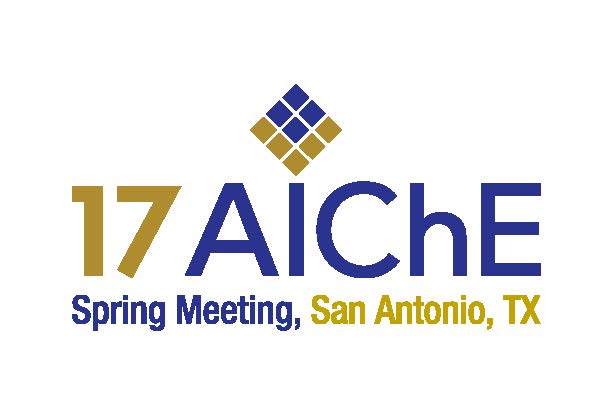

Ageing is something natural. Everything is ageing including us as human beings. When we get older we will visit a doctor more often, we might live healthier. As such we are adapting to a new reality. What about the Industry and very specific the Process Industry? If you look at Western-Europe or the States (Gulfcoast) most of the big expansions took place between 1960 and 1980. These assets are now 35 - 55 years old and considered as “aged†As example; it is well known that issues like Corrosion under Insulation will start after 10 years being in-operations. Is there awareness in the Industry? Is the quality of the existing Asset Management Strategies high enough to mitigate this on-going ageing? This paper does not provide all answers but will share an holistic view that can act as input for company specific strategies.
Lifecycle Management - Ageing at all levels
Lifecycle management is more than just a focus on equipment or component ageing. Within the Facility but also at Company level there will be specific (ageing) issues requiring attention. Typically a company would like to be recognized as an industry leader, focusing on shareholder value, profit and excellent entrepreneurship, being recognized as a respectful member of the society. As a consequence Capital, Budgets (ACE/RAB) and SHE (Safety, Health and Environment) goals must be set to meet those expectations. Facilities (Plants) must meet these goals (while ageing is on-going) and predict and cope with the unpredictable. Remaining life of assets including a forecast when technology is obsolete is important input. Think of e.g. Instrument & Analyzer Technology and Process Automation Hardware. Facility Condition Assessments can assist you in mitigating these concerns. At equipment level the selection of the appropriate strategy is important. Today we talk about “big dataâ€, but just introducing Condition Based or Predictive Maintenance might not result in an optimum solution. We need to strive to an optimum between strategies and shall consider “Run to Failure†maintenance as well (although “Run to Failure†is the lesser preferred strategy). It differs whether we talk about components like small gate valves or a Heavy Duty Compressor. Criticality defined by risk (consequence and likelihood) shall set the appropriate strategy. Only then can we optimize SHE, Reliability and Lifecycle Management and meet Company and Society expectations. Designing for the Real Lifecycle of your Facility instead of the Economic Lifecycle (often 20 years) will result in the lowest Long Term Cost of Ownership. But this is a challenge!
Lifecycle Management - More than Mechanical Integrity
A large Process Safety Incident has direct influence on the continued existence of a Company. Liability and bankruptcy might be direct consequences. If you look at recent incidents, failure of the Mechanical Integrity is a large contributor as is inadequate Operating Discipline in following standards and procedures (the human error). External factors as mergers, acquisitions or divestments very often put pressure on spending/budgets for years. In combination with aged assets the risk is growing of having incidents. Strong management programs (for design, inspection and repair) and full understanding of all credible damage mechanisms is crucial to minimize this risk. Management of Change, Corrosion under Insulation Programs, Risk Based Inspection and QA/QC on repair are just some examples of necessary tools and programs. Not to mention the need to assure expertise/knowledge as our workforce is retiring fast.
Lifecycle Management - External factors, the changing world
Fifty years ago design standards were different. Regulation and legislation was less stringent. Examples are today’s permits & environmental standards (e.g. NOx & CO2 emission) or the initiative taken in Europe by the EU on Best Available Techniques (BAT) reference documents, the so-called BREFs. Recently in The Netherlands the authorities introduced PGS29 (flammable liquid storage guidelines for tanks) mainly initiated by several incidents. Europe’s ATEX directive is another example. MAC-values (Maximum Allowed Concentration for exposure on chemicals) are today much lower. Is the plant designed (e.g. during clearance) not to exceed these values? Of course this is an excellent trend as we are all part of the society and we wish the best for our children. Serious investments might be required to meet today’s standards. Investments without sound economics may result in facility closure.
EEPC
There is close co-operation between the EEPC and the EPC. Both organisations have the purpose of providing a platform for the exchange of non-confidential information relating to the health, safety and environmental issues encountered in the production and handling of ethylene. The EEPC committee support the foundation of Issue Groups. The EEPC Maintenance Issue Group is one of them and provides participants a forum to debate maintenance experiences and maintenance policies in a number of identified areas of agreed importance. Ageing Assets is an area of interest and frequently topics are put on the agenda.
Some examples recently discussed are:
- High Temperature Hydrogen Attack experiences
- Corrosion Under Insulation - The Roadmap to manage CUI
- Inspection methods to quantify Touch-point Corrosion (pipe supports) including pipe-lift practices.
- S.I.C. failures in Convection Section (Furnace area)
- Composite Repair Systems for Pipe-work (e.g. temporary leak repair).
Conclusion:
It is a fact - the Process Industry has got aged assets. An optimized maintenance strategy at all levels (company, facility and equipment) is required to:
- Minimize the risk of having (large) SHE and Process Safety Incidents
- Optimize Reliability and Costs as required at company / business level
External factors play a large role within the “lifecycle of an asset†and must be controlled. Organizations like EEPC can assist companies in sharing experiences to mitigate the risk of having aged assets.
Presenter(s)
Language
Pricing
Individuals
| AIChE Member Credits | 0.5 |
| AIChE Pro Members | $19.00 |
| Fuels and Petrochemicals Division Members | Free |
| AIChE Graduate Student Members | Free |
| AIChE Undergraduate Student Members | Free |
| AIChE Explorer Members | $29.00 |
| Non-Members | $29.00 |
